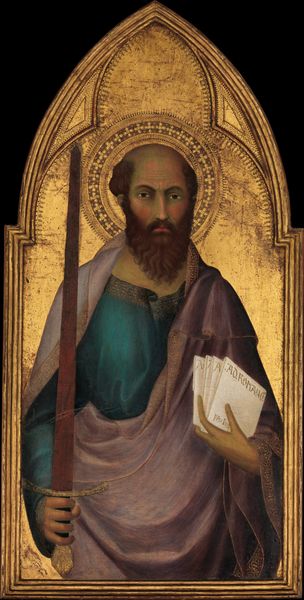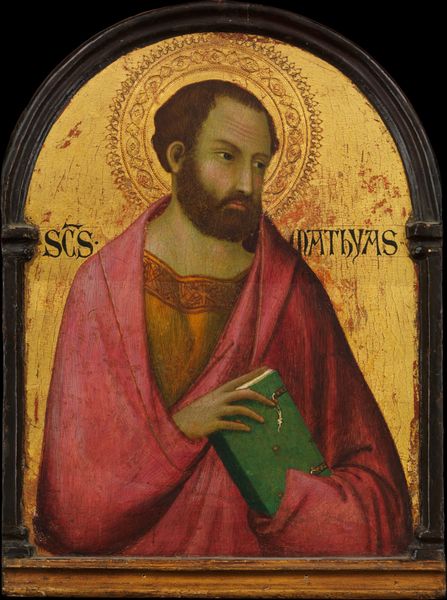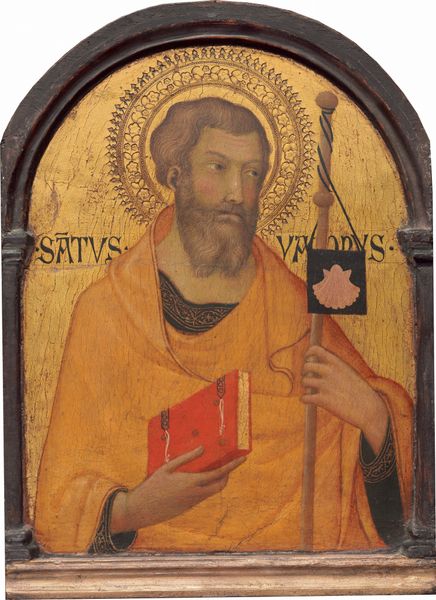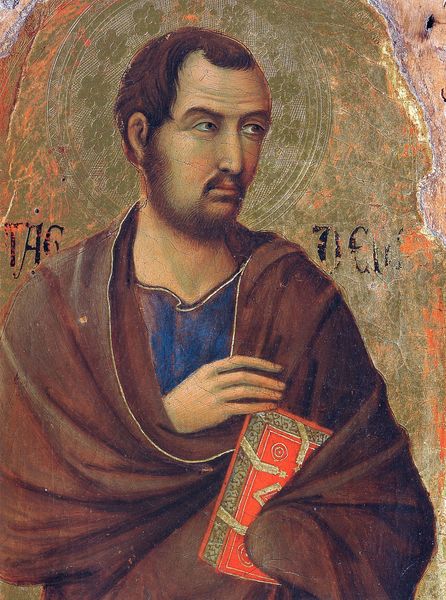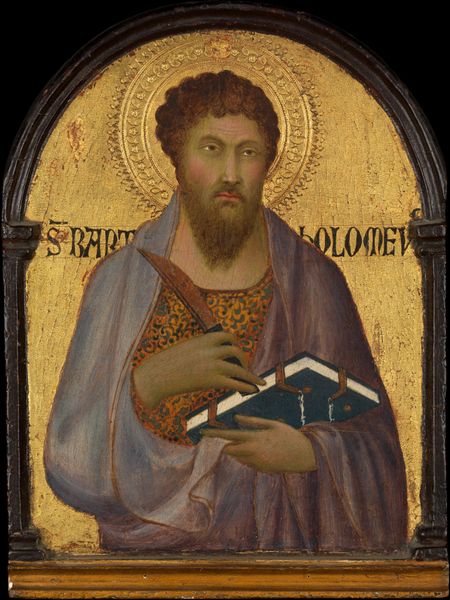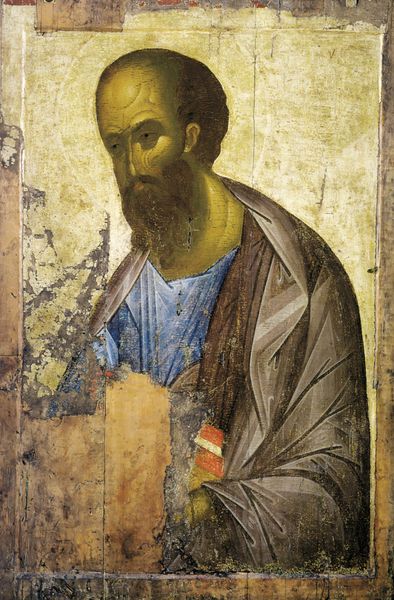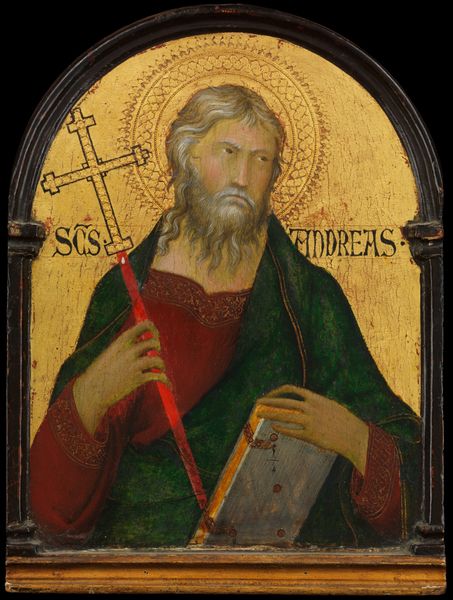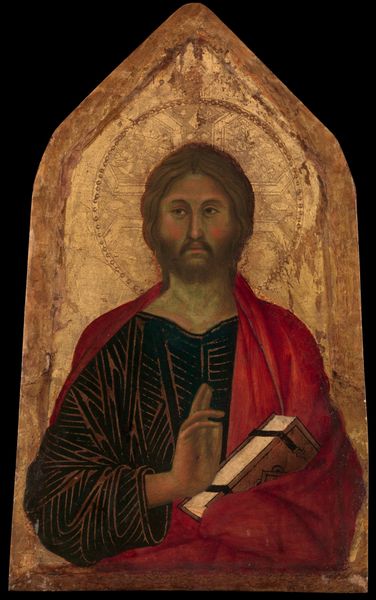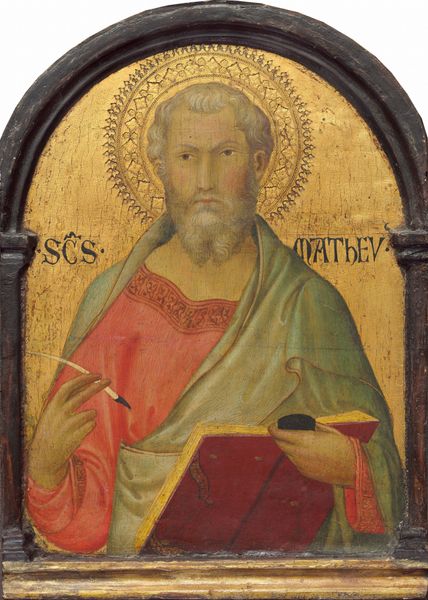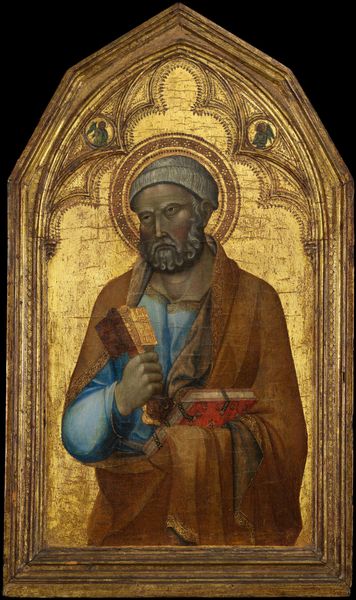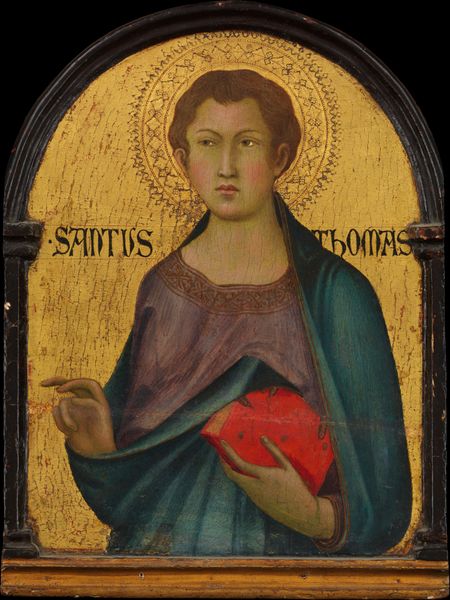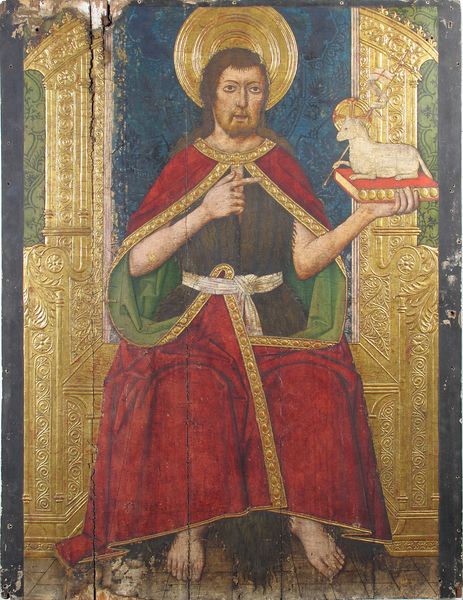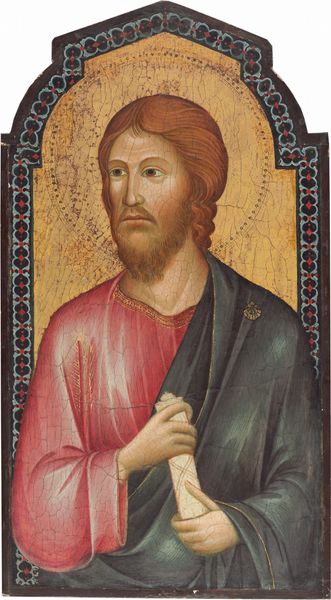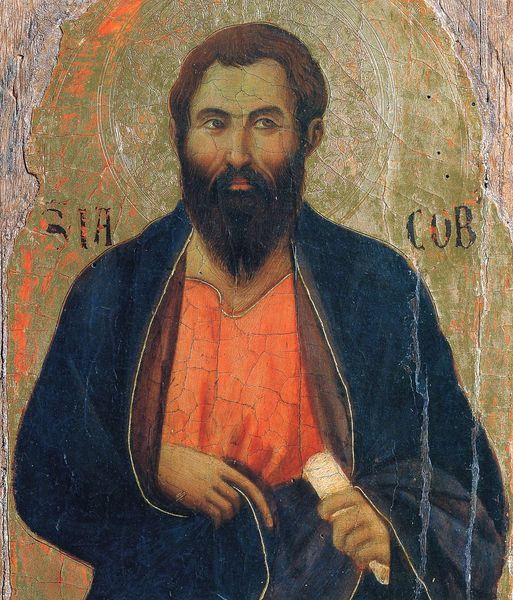
tempera, painting
#
portrait
#
medieval
#
tempera
#
painting
#
sienese-school
#
figuration
#
geometric
#
history-painting
#
italian-renaissance
#
portrait art
Dimensions: painted surface: 26.2 x 19.7 cm (10 5/16 x 7 3/4 in.) overall: 30.7 x 23.5 cm (12 1/16 x 9 1/4 in.) framed: 44.4 x 60 cm (17 1/2 x 23 5/8 in.)
Copyright: National Gallery of Art: CC0 1.0
Editor: This tempera painting is Saint Simon, by Simone Martini, dating from around 1315 to 1320. He has such a weighty presence, especially given the small scale. The intense gaze, paired with the book, create this serious tone. What do you see in this piece? Curator: What strikes me is the contrast between the idealised image of sainthood, represented by the golden halo and inscription, and the almost unsettlingly human face of Saint Simon. He looks weary, perhaps burdened. Does his somewhat melancholic expression perhaps speak to the weight of religious doctrine at the time, a tension between faith and humanity that echoes through much of late Medieval and early Renaissance art? Editor: I never thought of it that way! The book, for instance, I just took as a symbolic attribute. But now, I'm considering how access to religious texts may have reinforced or even challenged existing hierarchies. Curator: Precisely. Martini, though celebrated, was working within a highly structured patronage system of the church. His art, even while appearing conventional, might have subtle critiques embedded. Where do you see evidence of that possible critique? The slight asymmetry of his features, maybe? The individualized beard? The very human-like creases around his eyes? Editor: Those small details, like the beard or even how his cloak drapes, feel like they bring the image away from strict symbolism into something more grounded. Curator: It’s crucial to think of paintings like Saint Simon, not just as aesthetic objects or religious icons, but also as complex cultural products reflecting a particular moment of social and theological debate. The artist adds complexity to existing representations, giving a glimpse into how evolving identities found expression within even the most conventional forms. Editor: Thinking about Saint Simon in that intersectional light, I'm getting a totally new view on early Renaissance art. Thanks for sharing your insight! Curator: Absolutely, these dialogues are how we reveal layers of meaning within what may initially appear straightforward!
Comments
No comments
Be the first to comment and join the conversation on the ultimate creative platform.
